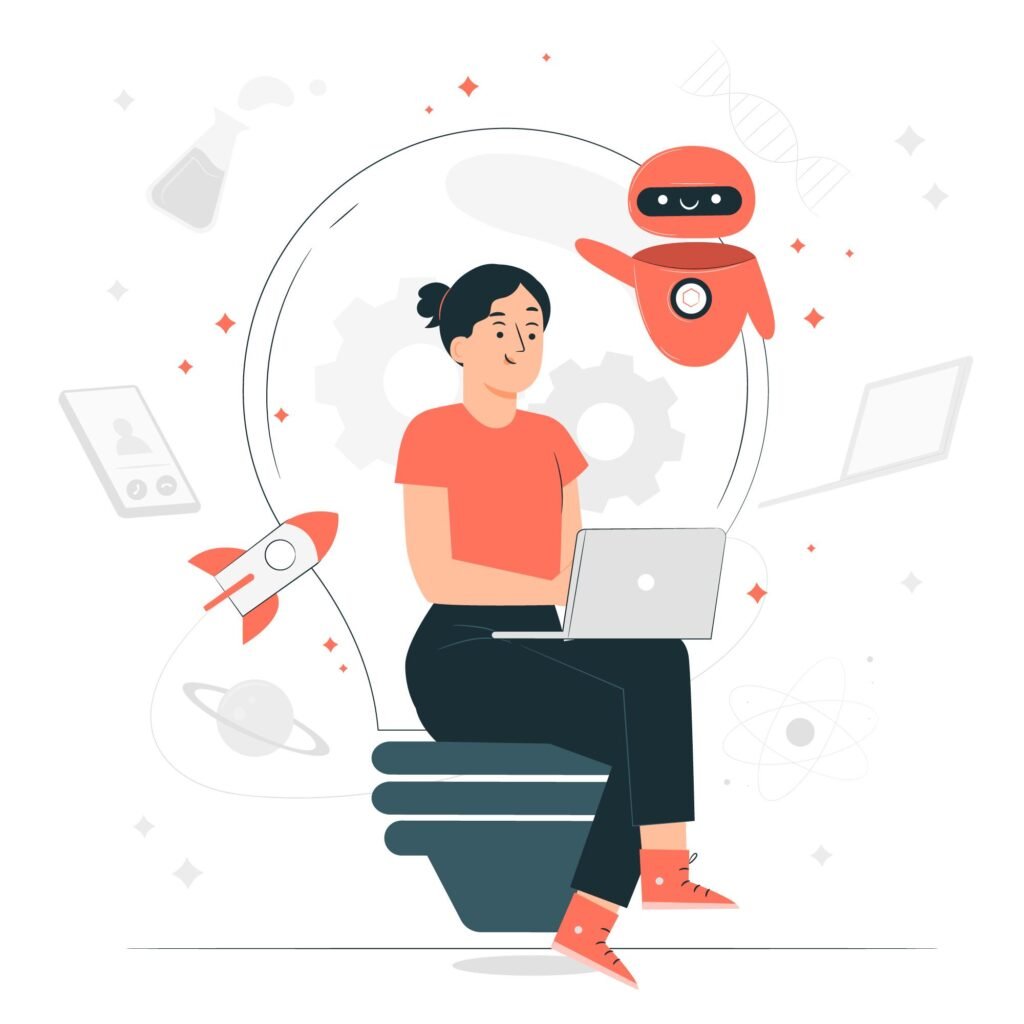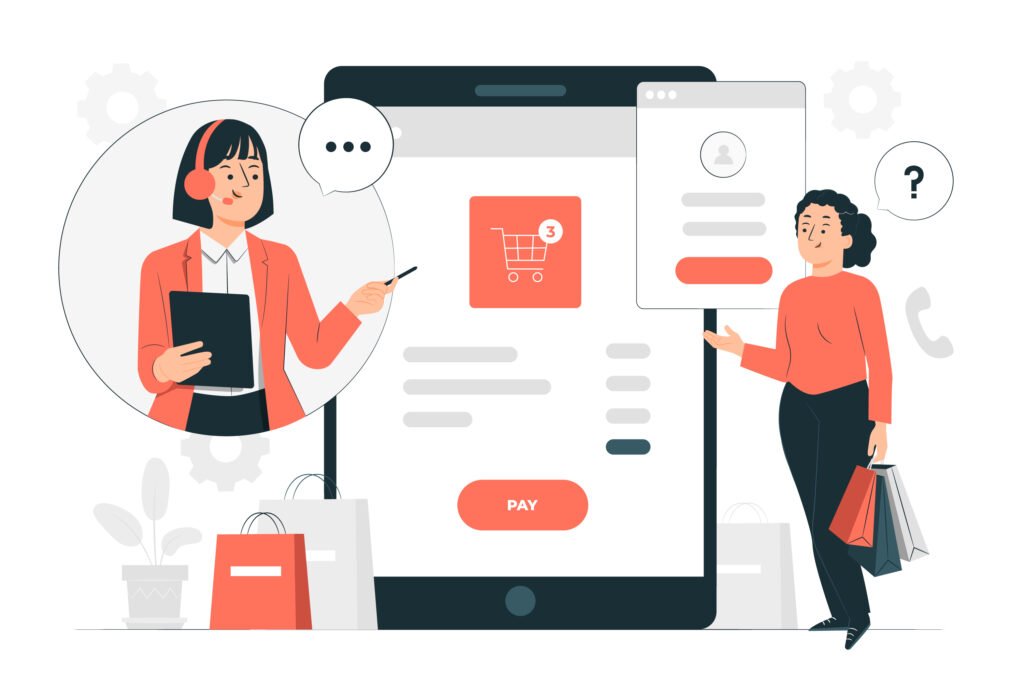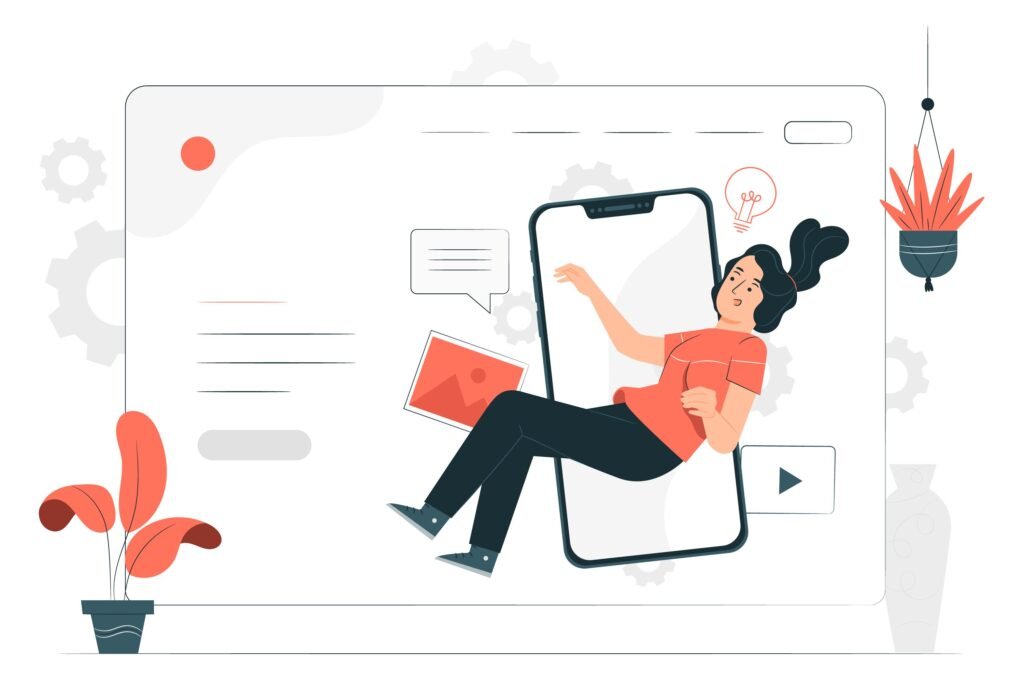Conversational AI: Enhancing Customer Support with NLP
18 Jan 2024
Igor Kelly

Instead of rigid commands or specific keywords, conversational AI helps brands communicate with their audience more naturally, and the AI understands the context of the online conversation. An NLP chatbot is a more precise way of describing a chatbot with artificial intelligence. Essentially, NLP is the specific type of artificial intelligence used in chatbots.
Explore our new dedicated article, where we delve deeper into the significance of chatbots with AI, particularly leveraging Natural Language Processing (NLP), and how they enhance customer support.
Decoding Conversations: NLP Unleashed
NLP enables chatbots to communicate in human language. NLP also helps chatbots interpret human language as a human would and to recognize important contextual nuances.
Technically speaking, NLP converts text into structured data that the computer can understand. To do this, it has to process large amounts of linguistic data. Tracking and interpreting this data allows chatbots to understand a customer’s inquiry and respond in a fluid, comprehensive way, just as a human would.
NLP empowers chatbots by enhancing their ability to understand and respond to human language. Here’s how NLP contributes to the effectiveness of chatbots:
- Language understanding: Chatbots equipped with NLP can analyze the structure of sentences, identify key phrases, and extract relevant information from user inputs. This understanding is essential for accurately interpreting user queries and providing meaningful responses.
- Context awareness: NLP helps chatbots maintain context throughout a conversation. It allows them to remember and reference previous interactions, ensuring a more coherent and natural dialogue. This capability makes interactions with chatbots feel more like conversations with a human, as they can grasp the continuity of a dialogue.
- Adaptability and continuous learning: NLP-equipped chatbots can adapt to variations in language, accommodating diverse phrasing and expressions used by different users. This adaptability makes chatbots more user-friendly, as they can understand and respond effectively to various inputs.
As you can see, NLP for conversational AI empowers chatbots by allowing them to understand, maintain context, and continuously learn from user interactions, making them more effective and user-friendly in natural language conversations.
Uninterrupted Support: NLP’s Benefits Over Traditional Bots
What is conversational AI? This concept refers to artificial intelligence systems designed for natural language interactions. It is closely connected to NLP chatbots as they use Natural Language Processing (NLP) to enable machines to understand, interpret, and conversationally respond to human language, enhancing user engagement and interaction.
Most standard bots are so-called «rule-based» bots. They are designed to strictly follow the conversational rules set by their creator. A rule-based bot issues a prefabricated response when a user enters a specific command. However, outside of these rules, a standard bot may struggle to provide helpful information to the user. What’s missing is the flexibility that is such an essential part of human conversations.
So, what characterizes NLP chatbots? Here are some of the features of NLP chatbots that give them an advantage over traditional bots:
- It can understand natural language. An NLP-powered chatbots can understand and interpret natural language. For example, NLP enables chatbots to interact with user input containing spelling and grammatical errors. It can even determine whether an input is an intention or a question, which can go a long way toward meeting the user’s needs in an accurate and timely manner. Other aspects of natural language include emotional content and emphasis — things you would naturally pick up on if you were speaking to another person face-to-face.
- It feels more like a conversation than a questionnaire. One of the biggest challenges for chatbots is that a chatbot user can literally type anything. When the user is interacting with a rule-based bot, any input that is not expected can lead to a conversational dead end. For this reason, conversations with standard bots often feel like questionnaires, which can be discouraging. After all, you could just flick through a FAQ to find what you’re looking for. An NLP chatbot differs precisely because it can adapt to conversational prompts, creating an environment that feels more like a natural conversation.
- It provides a more reliable 24/7 availability. Traditional bots may have limitations in terms of operating hours, leading to user frustration when assistance is needed outside those hours. Being available around the clock, NLP chatbots cater to a global audience in different time zones. Users from various regions can access and interact with the chatbot at their convenience, fostering inclusivity and expanding the reach of the service.
NLP-powered chatbots revolutionize customer support by offering instant, global assistance, and adaptability to diverse user schedules. Modern data science solutions empowered by NLP algorithms can help customer care departments process vast amounts of data more efficiently, leading to more accurate and context-aware analysis.
Crafting Personalized Experiences
First of all, let’s break down the natural language processing structure of how the chatbot recognizes and processes the user’s inquiry.

- User input: «I want to throw away my old, broken lamps.»
- Tokenization: The chatbot identifies the boundaries of sentences and words in the user’s input. Example: «I,» «want,» «to,» «throw,» «away,» «my,» «old,» «,» «broken,» «lamps.»
- Lemmatization: The chatbot determines the basic forms of words, reducing variations to their root form for better understanding. Example: «throw» (from «throw»), «away» (from «away»), «old» (from «old»), «broken» (from «broken»), «lamp» (from «lamps»).
- Part-of-speech (POS) tagging: The chatbot identifies the parts of speech for each word, understanding the role of each word in the sentence. Example: «I» (pronoun), «want» (verb), «to» (preposition), «throw» (verb), «away» (adverb), «my» (possessive pronoun), «old» (adjective), «broken» (adjective), «lamps» (noun).
- Understanding user intent: The chatbot gains insights into the user’s intent to dispose of something by analyzing the lemmatized words and their parts of speech. Example: Understanding that the user wants to «throw away» and the item to be discarded is described as «old, broken lamps.»
- Response generation: Based on the processed information, the chatbot generates a relevant response, such as providing information on where to dispose of old, broken lamps.
Basically, this is how chatbots understand the user’s inquiry, break it down into essential components, and generate a meaningful and accurate response tailored to the user’s needs.
The big advantage for users is that a concern can be communicated quickly and easily. However, it is difficult for the company to answer every question correctly from the start. For every user input, there are three possible results, and here’s how each outcome contributes to crafting personalized experiences:
1. The chatbot correctly understands the user and gives a correct answer.
When the chatbot accurately understands the user’s query and responds correctly, it enhances the overall user experience. This contributes to personalization by showing that the system comprehends individual preferences, needs, and context.
The chatbot can use this correct understanding to offer tailored recommendations, personalized content, or direct users to relevant information, creating a more satisfying and efficient interaction.
2. The chatbot misunderstands the user and gives the wrong answer.
Instances where the chatbot misunderstands a user provide valuable insights into potential gaps or misconceptions in the system’s training data. By analyzing these errors, developers can identify areas for improvement and refine the chatbot’s language model.
This iterative feedback loop allows the company to continually enhance the chatbot’s ability to understand specific user nuances and language, contributing to a more personalized and accurate service over time.
3. The chatbot does not understand the user at all and cannot send an answer back.
When the chatbot fails to understand a user, it signals the need to improve the system’s ability to handle a broader range of user inputs. This lack of understanding can prompt developers to enrich the chatbot’s training data with diverse examples and edge cases.
Overcoming these challenges leads to a more robust and adaptable chatbot that can better cater to individual users, regardless of their communication style or specific queries. Improvements in understanding contribute to a more personalized and user-friendly experience.
The continuous learning and adaptation facilitated by the chatbot’s interactions contribute to crafting personalized experiences for customers. By addressing and learning from correct and incorrect interactions, companies can refine their chatbot systems to better understand and meet the unique needs of individual users, ultimately enhancing customer satisfaction and engagement.
NLP: Stories of Success
To understand how drastically the area of customer service is changing with the use of NLP chatbots, let’s dive into NLP best practices and applications in different industries.
1. eCommerce: Virtual shopping assistant
An NLP chatbot integrated into an eCommerce platform acts as a virtual shopping assistant. It users find products, provide recommendations, and even assist in the purchasing process. Today, over 73% of consumers anticipate encountering digital assistants on websites to facilitate seamless and fast interactions.
Benefits of NLP: Increased customer engagement and satisfaction as users can easily discover products, receive personalized recommendations and assistance, leading to higher conversion rates.
2. Marketing: Conversational ad campaigns
NLP for chatbots is employed in marketing and ad campaigns to engage users through interactive and conversational experiences. These chatbots answer queries related to products, promotions, or services, driving user interaction and capturing valuable data for targeted advertising. One of the most impressive examples is how Volkswagen’s marketing team saw a 14% increase in dealer orders for a particular model using AI suggestions.
Benefits of NLP: Improved user engagement and data collection, allowing businesses to tailor marketing strategies based on real-time customer interactions and preferences.
3. Social media: Content recommendations and interaction
Media outlets utilize NLP for conversational AI to recommend personalized content to users based on their preferences, behavior, and historical interactions. Users can also engage in natural language conversations to explore news, articles, or multimedia content. Gartner predicts that AI will handle 15% of consumer interactions via chatbots.
Benefits of NLP: Enhanced user experience with relevant content recommendations and prolonged user interaction, contributing to higher user retention.
4. Voice assistants: Conversational AI in daily life
The last example to be mentioned here is the voice assistants that are omnipresent today: Siri from Apple, Alexa from Amazon, and Cortana from Microsoft are the most prominent examples. They all use natural language processing to evaluate the spoken language and formulate appropriate answers using text-to-speech processes. This has now reached the point where people can communicate with devices, and the services have become personal assistants in everyday life.

Surfing Online Communication Challenges with NLP
Converting natural text into information poses challenges for computers due to the intricate rules governing language comprehension. Mastery of both word meanings and their contextual connections is essential for conveying intended messages. Key challenges in this process include:
- Ambiguity of the chat response. In natural language, words are often unambiguous but can carry different meanings in various contexts, leading to lexical, syntactic, and semantic ambiguity. NLP chatbots address this challenge through context evaluation, although a comprehensive understanding of the semantic meaning of words in a sentence is still under development.
- Wrong synonymizing. An inherent aspect of natural language is the ability to express the same idea using different terms, contingent on context. Depending on the situation, using different words for the same thing can be confusing for NLP chatbots. For example, if someone asks about the «importance» of an item, but the chatbot understands it as asking about its «size,» it might lead to misunderstandings during the conversation.
- Coreference hurdles. Coreference is textual or syntactic cohesion in which two or more nominative (noun) groups refer to the same object (referent). It becomes a challenge for chatbot users because it requires identifying words or phrases that point to the same thing. Failure to recognize coreferences in chatbots can lead to confusion or inaccurate responses. For instance, if a user asks, «Where can I buy it?» without specifying the product, NLP chatbots must correctly link «it» to the relevant item to provide accurate information. Modern deep-learning techniques are actively employed to improve the chatbot’s ability to handle such references effectively.
- Writing style misunderstandings. The same idea can be expressed in varied ways depending on the author’s personality, intentions, and feelings. Some authors employ irony or sarcasm to convey meanings opposite to their literal interpretations.
There’s another challenge that almost lies on the surface. 60% of the Userlike study respondents said they would rather wait in a queue if it means being connected to a human service agent.
To equalize or even form a tipping point in public opinion about chatbots, Lightpoint experts offer the following recommendations:
- Educational prompts and tutorials: Provide informative prompts and tutorials that guide users on leveraging the chatbot for common problem-solving. Use tooltips or pop-ups to educate users about the chatbot’s capabilities and how it can efficiently address their queries or issues.
- Establish efficient routing systems: Implement advanced systems to swiftly connect customers with the most suitable human service agent in case of an especially complicated question or based on behavioral signs such as irritability, nervousness, or even anger. This will also help minimize wait times.
- Ensure continuous improvement through feedback: Gather user feedback and continuously improve the chatbot’s functionality based on common issues users face. Actively seek input to enhance the chatbot’s effectiveness, making it a more reliable and preferred option for users seeking quick solutions.
Closing the Conversation
In conversational AI, the inherent challenge of understanding every user query in free text input serves as a valuable learning opportunity for the chatbot. Each misunderstood question contributes to the iterative refinement of the AI’s language processing capabilities, fostering continuous improvement and ultimately enhancing the overall effectiveness of customer support interactions. Therefore, overcoming challenges associated with distrust of chatbots is a matter of time.
Discover the transformative power of conversational AI for your company. Reach out to the Lightpoint team to explore the possibilities and elevate your business with NLP models for chatbots.


